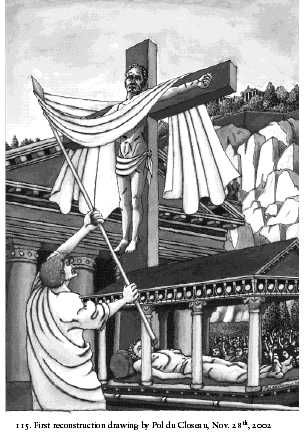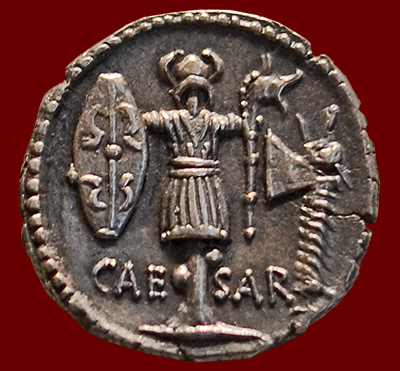Documentary film about a linguist and a Catholic priest, who search for and find the origins of Christianity and the real historical Jesus: Julius Caesar.
Extracts from the book «Jesus was Caesar»
© Francesco Carotta, Kirchzarten
Both Caesar and Jesus start their rising careers in neighboring states in the north: Gallia and Galilee.
Both have to cross a fateful river: the Rubicon and the Jordan. Once across the rivers, they both come across a patron/rival: Pompeius and John the Baptist, and their first followers: Antonius and Curio on the one hand and Peter and Andrew on the other.
Both are continually on the move, finally arriving at the capital, Rome and Jerusalem, where they at first triumph, yet subsequently undergo their passion.
Both have good relationships with women and have a special relationship with one particular woman, Caesar with Cleopatra and Jesus with Magdalene.
Both have encounters at night, Caesar with Nicomedes, Jesus with Nicodemus.
Both of them are great orators and of the highest nobility, descendant of Aeneas and son of David, yet nevertheless both are self-made men. Both struggle hard and ultimately triumph, hence each has a ‘triumphal entry’: Caesar on horseback and Jesus on a donkey.
Both have an affinity to ordinary people—and both run afoul of the
highest authorities: Caesar with the Senate, Jesus with the Sanhedrin.
Both are contentious characters, but show praiseworthy clemency as well: the clementia Caesaris and Jesus’ Love-thy-enemy.
Both have a traitor: Brutus and Judas. And an assassin who at first gets away: the other Brutus and Barabbas. And one who washes his hands of it: Lepidus and Pilate.
Both are accused of making themselves kings: King of the Romans and King of the Jews. Both are dressed in red royal robes and wear a crown on their heads: a laurel wreath and a crown of thorns.
Both get killed: Caesar is stabbed with daggers, Jesus is crucified, but
with a stab wound in his side.
Both die on the same respective dates of the year: Caesar on the Ides (15th) of March, Jesus on the 15th of Nisan.
Both are deified posthumously: as Divus Iulius and as Jesus Christ.
Both leave behind priests: Marcus Antonius and Peter. Both have a posthumous heir: Gaius Octavianus adopted by Caesar’s Last Will and Testament and John the disciple whom Jesus adopts while on the cross (‘Woman, behold thy son!’).
http://www.carotta.de/subseite/texte/esumma/33-37.html
Wax effigy of Caesar on a victory cross/ tropaeum the source of the christian crucifiction and cross









